#grifola frondosa
Explore tagged Tumblr posts
Text




#autumn#pholiota#Grifola frondosa#?#fomes fomentarius#mushrooms#fungi#mycology#naturecore#nature#nature photography#woods#birch#original photography#photographers on tumblr
499 notes
·
View notes
Text
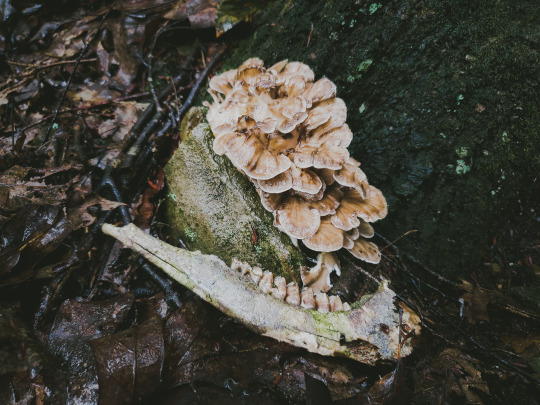
Maitake and deer jawbone
#photography#nature#nature photography#mushrooms#hiking#mycology#edible mushrooms#hen of the woods#deer bones#animal bones#vulture culture#Bones#Grifola frondosa#Maitake
127 notes
·
View notes
Text
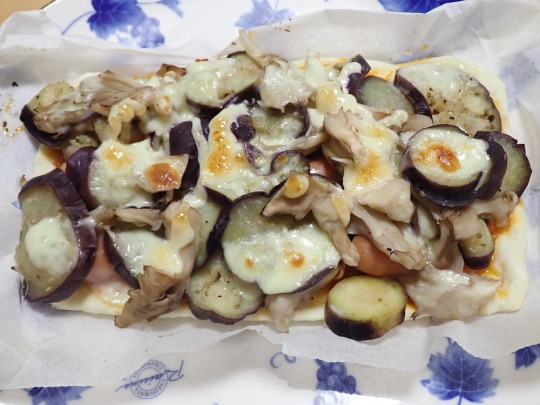
オーブントースターで焼く、あらびきソーセージ・ナス・舞茸・ミートソース・チーズ・マヨネーズのありあわせ適当ピッツァ(7月23日)
#pizza#egg plant#bakłażan#sausage#kiełbasa#Grifola frondosa#Hen of the Woods#maitake#ram's head#Żagwica listkowata#grzyb#cooking#japan
1 note
·
View note
Text








Грибы на трухлявых пнях и стволах деревьев - Навозник мерцающий (лат. Coprinellus micaceus), Трутовик окаймлённый (Fomitopsis pinicola), Грифола курчавая (лат. Grifola frondosa), Ежовик коралловидный (лат. Herícium coralloídes), Лиственная губка или Трутовик настоящий (Fomes fomentarius) и Ложные опята. Октябрь 24.
Mushrooms on rotten stumps and tree trunks -. Coprinellus micaceus, Bordered tinder fungus (Fomitopsis pinicola), Grifola frondosa, Coral-shaped hedgehog (Lat. Hericium coralloídes), True tinder fungus (Fomes fomentarius ) and False honey mushrooms. October 24.
#Россия#русский tumblr#природа#осень#лиственный лес#цветная листва#пень#мох#Микология#грибы#макрофото#мои фото#Russia#autumn#nature#nature photography#deciduous forest#stump#moss#mushrooms#fungus#mycology#colored foliage#my photos#original photography#macro photography#photographers on tumblr
243 notes
·
View notes
Text
HNC presentation terms.
Rosenan; a human-non-conforming individual who presents themselves in a feminine fashion.
Umphalidiormian; a human-non-conforming individual who presents themselves in a neutral fashion.
Grifondosian; a human-non-conforming individual who presents themselves in masculine fashion.
Baoralorian; a human-non-conforming individual who presents themselves in a xenic fashion.
Ramariosian; a human-non-conforming individual who presents themselves in a androgynous fashion.
Etymologies: Rosenan (mycena rosea), Umphalidiormian (umphalotus nidiformis), Grifondosian (Grifola frondosa), Baoralorian (Baorangia bicolor), Ramariosian (ramaria formosa).
No flags available currently.
# Taglist @radiomogai @obscurian @presentationflag-archive @rwuffles @smilepilled (feel free to ignore)
#hopping queue#mogai#liom#liom community#mogai community#liom label#mogai label#liom safe#mogai safe#: koiran nappulat#presentation label#presentation term#alterhuman#otherkin#human non conforming#nonhuman#nonhuman community#alterhuman term#alterhuman flag
34 notes
·
View notes
Text








It's a proper hen do! Which in British means "I found so much fucking hen of the woods." Maitake mushroom (Grifola frondosa) is a choice edible and growing abundantly in the woods right now; you can typically find it at the base of oak trees. It retails for way too much at Whole Foods but part of that may be the Worm Removal Tax, because all the specimens pictured here were definitely full of worms.
#mycology#fungi#mushrooms#nature photography#dirtcore#goblincore#forestcore#forest floor#foraging#nature#the fungus among us#animals#turtle#deer
23 notes
·
View notes
Text
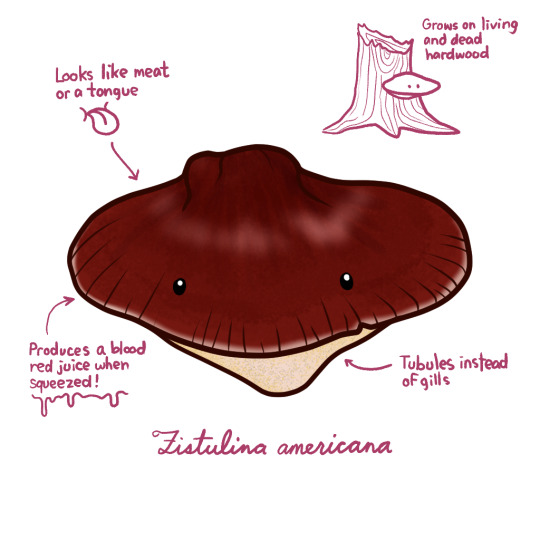
We interrupt these penguins to bring a correction to Fungi February! It turns out maitake (Grifola frondosa) doesn't grow in California, but what does is the magnificent beefsteak mushroom! Despite looking like meat (even in cross section!), they have a sour taste due to the presence of several acids, including oxalic acid. They're not common, but they are unmisteakable :P
Thanks to fascinatedbyfungi on Instagram for the correction and suggestion!
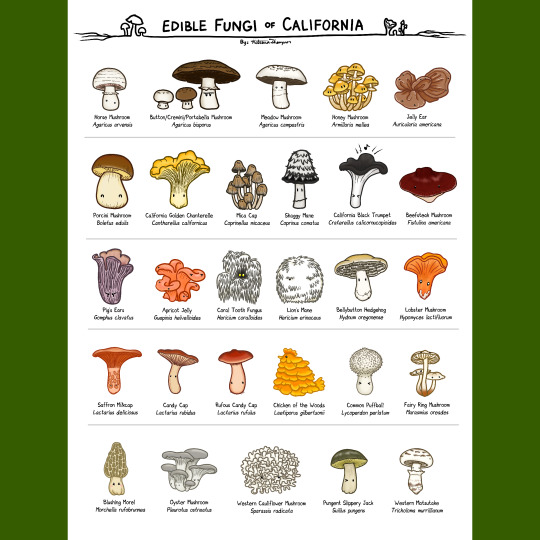
The poster's been updated accordingly on Redbubble
#fungi february#fungus#mushroom#beefsteak mushroom#edible mushroom#mycology#education#art#correction
45 notes
·
View notes
Text
How to Identify Chicken of the Woods Mushrooms
Originally posted n my website at https://rebeccalexa.com/how-to-identify-chicken-of-the-woods/. Click here to learn more about the How to Identify article series.
Name: Chicken of the woods (Laetiporus spp.), aka sulfur shelf, chicken mushroom (hen of the woods is a different mushroom entirely, Grifola frondosa)
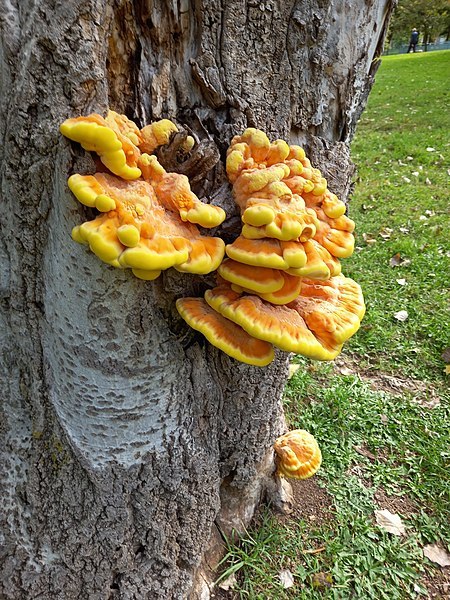
L. sulphureus
Range and typical habitat(s): There are Laetiporus species found in temperate forests on every continent except Antarctica. They are especially abundant in the Northern hemisphere, particularly North America and Europe. They are saprophytes that feed on dead or injured trees and can cause brown rot as they digest cellulose but leave lignin intact. Most species prefer deciduous trees such as oaks or beeches. However, L. conifericola is an example of a species that colonizes conifers such as spruces and firs.

Distinguishing physical characteristics (size, colors, overall shapes, detail shapes): I often describe chicken of the woods to my foraging students as looking like a pile of orange and yellow pancakes exploding out of the side of a tree. These are fleshy-looking, shelf-shaped mushrooms that often grow in large stacks or clusters. A particularly large individual shelf may be almost a foot across, and some clusters may be several feet tall. Look closely, and you will notice that these shelves do not have stems but attach directly to the host tree.
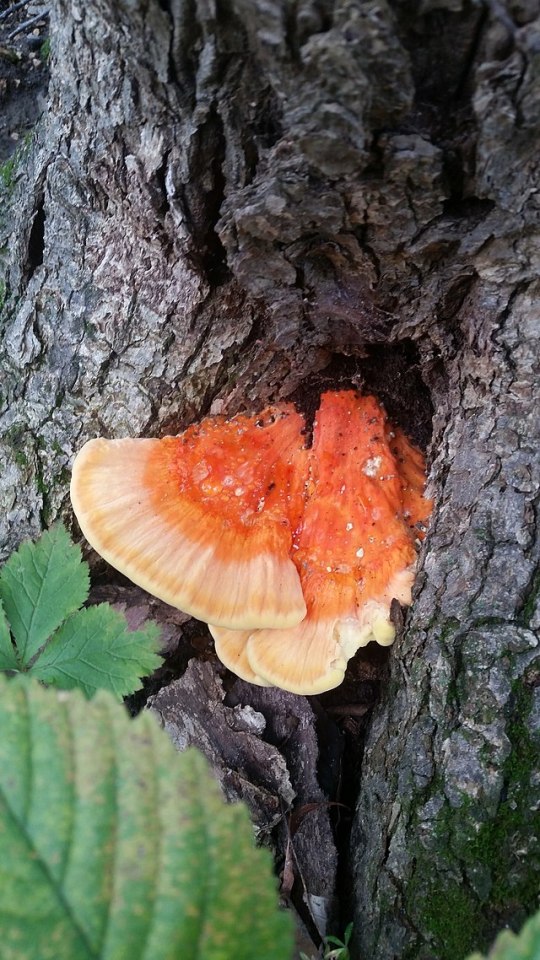
A specimen of L. sulphureus displaying a darker orange with pale orange instead of bright yellow margins.
While the bright sulfur yellow and orange color combination is typical, particularly in well-known chicken of the woods species such as L. sulphureus, there may be significant color variation even within the same species. Some have a deeper orange that’s almost red, while others are a more uniform washed-out orange with little to no yellow, or perhaps cream instead. L. portentosus, which is particularly common in Australia, gets its common name, “white punk”, from its creamy white color with little to no orange. L. persicinus, found in the southeast United States and Caribbean, may have some brown on its shelves as well.

L. conifericola, displaying the yellow pore surface underneath. RTehan at Mushroom Observer, CCA-SA-3.0
The underside of chicken of the woods tends to be yellow to cream, and while it may appear smooth at first it does have very fine pores. The spores are generally white, though a microscope may be necessary in order to differentiate between very similar species that overlap in range. Most Laetiporus species do not bruise; however, L. persicinus has pores that bruise brown shortly after being damaged.
Younger chicken of the woods tend to have a softer, more rubbery tactile texture (yes, it’s okay to touch mushrooms to see what they feel like.) As they get older, however, they get a tough, woody texture, and cooking them does not make them tender again.
Other organisms it could be confused with and how to tell the difference: Most of the time you’re going to be differentiating among multiple Laetiporus species, in which case location, color and substrate (what kind of tree it’s growing on) are going to be the main factors in identifying down to species level. If you have a microscope and want to look at the spores in detail you’re certainly welcome, but the casual identifier should be able to get by without this.

Dyer’s polypore (Phaeolus schweinitzii)
There are, however, several other shelf-like fungi with which chicken of the woods may be confused if you aren’t looking carefully. Dyer’s polypore (Phaeolus schweinitzii) may have some orange on the upper surface, especially when young, but the centers turn an increasingly dark brown as the mushroom matures. It also has a velvety texture that chicken of the woods lacks. It is found primarily on conifers, and the pores bruise brown when damaged. It has a white spore print.

Woolly velvet polypore (Onnia tomentosa)
The woolly velvet polypore (Onnia tomentosa) is another look-alike. It is generally brown with a white to cream outer margin, but while the lighter brown shades may have a bit of an orange tint, the brown is a giveaway that this is not chicken of the woods. The underside is also brown, rather than white or yellow, and it primarily grows on conifers, especially spruce.

Pycnoporus cinnabarinus
Pycnoporus cinnabarinus looks very much like a Laetiporus in shape, but is a bright red-orange color on both the top and the underside. It has a drier, less flexible texture as well, and prefers hardwood trees as hosts.
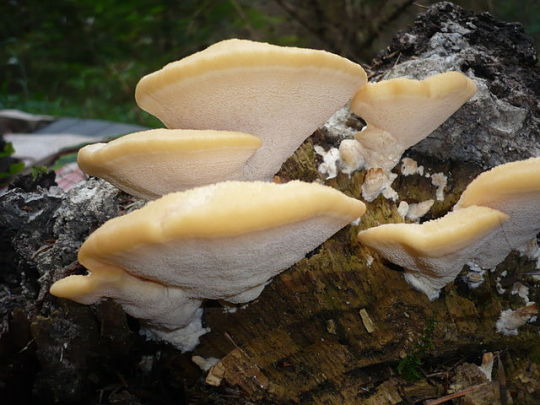
Climacocystis borealis. Gerhard Koller at Mushroom Observer, CCA-SA-3.0
Climacocystis borealis has a hairy texture on the upper surface, and the color is a rather dull cream, yellow or orange, Underneath the pores are cream to yellow and have a more visible texture than on Laetiporus. It attaches to its host conifer trees with a short stem-like structure.

Hen of the woods (Grifola frondosa). Patrick Harvey, CCA-SA-3.0
Hen of the woods (Grifola frondosa), also known as maitake, looks something like a burst of grayish-brown feathers or leaves sprouting from the base of a tree. Upon closer inspection the individual caps are much smaller, more delicate and more numerous than in Laetiporus. The pores underneath are often more visible as well. They prefer hardwoods such as oaks.
There are other shelf-shaped mushrooms in the family Fomitopsidaceae that are vaguely similar to Laetiporus species, but all differ in shape and color, among other details. Make sure you look very closely at all colors on both the topside and underside of a given shelf mushroom, check for bruising by cutting or crushing a small part and waiting a half hour, and take a spore print.
Anything else worth mentioning? Laetiporus species are generally considered to be edible, though more commonly eaten species like L. sulphureus have more documentation in this regard than less common species. Its common name comes from the cooked mushroom’s resemblance to cooked chicken meat, and it is often used as a vegetarian meat alternative in recipes.
Care should be taken when consuming any Laetiporus species for the first time, even if you have eaten other species of the genus with no problem. Research each species as though you had never encountered chicken of the woods before, and make sure that species is considered safely edible by current standards.
A small number of people who eat chicken of the woods experience unpleasant symptoms ranging from gastrointestinal upset to swollen lips or mouth and dizziness. This may be due to allergic reactions, so caution is absolutely necessary. Always cook wild mushrooms, including Laetiporus, thoroughly; try a few bites, then wait a couple of days to see if you have any symptoms.
Further reading:
Mushroom Expert: Laetiporus
Chicken of the Woods
Chicken Of The Woods (Laetiporus sulphureus Species Complex)
Chicken of the Woods (Laetiporus sulphureus)
Chasing the Chicken of the Woods (Facts, Identification, and Recipes)
Did you enjoy this post? Consider taking one of my online foraging and natural history classes or hiring me for a guided nature tour, checking out my other articles, or picking up a paperback or ebook I’ve written! You can even buy me a coffee here!
#mushroom#mushrooms#mushroom hunting#mushroom foraging#foraging#edible mushrooms#fungi#fungus#mycology#nature identification#nature#ecology#chicken of the woods#wild mushrooms#cooking#food
45 notes
·
View notes
Text
2 notes
·
View notes
Text






Woke up to sun after two days of rain so of course I got my butt out to the woods before work, and I found out that the woods near our new place are full of hen-of-the-woods (Grifola frondosa)! The first one I found looked animal-eaten and old, the second one I collected, and the third looked like it had been harvested by a fellow forager.
I also found some resinous polypore Ischnoderma resinosum, which is nothing new, but this was the first time I saw its titular drops of resin! Also, the little whorled mushrooms are Panellus stipticus, which is bioluminescent!!! I'm trying to learn the Latin names even though it's really hard.
I ID'd a few of these on-site with my field guide, brought a few others to work along with some mushroom books to ID them during my downtime, and left that last one in place without ID'ing because it was just too perfect where it was. All mushroom names (and some extra details) are in the image descriptions.
6 notes
·
View notes
Text
3 Useful Mushrooms In An Apothecary!
Mushroom dance, mushroom dance, whatever could it mean~
Mushrooms are amazing! These fun-guys are excellent for a multitude of reasons, so many in fact that if I attempted to list them out now this post would be excessively long. So instead, I’m going to give you a little post about a couple of lovely mushrooms that are incredibly useful in your home apothecary!

Lion’s Mane
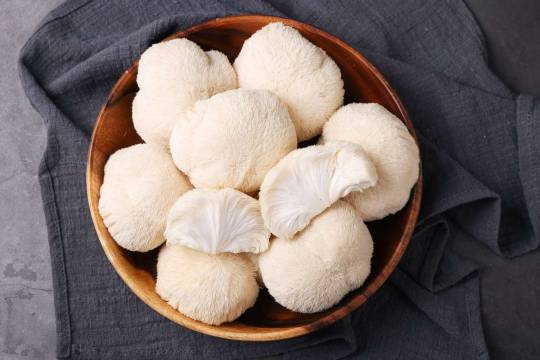
Latin Name: Hericium erinaceus
This funky lil mushie is best known as a nervous system tonic! It shares the immunomodulant and anti-inflammatory activity of several other mushrooms used in herbalism practices.
Laboratory studies have found that polysaccharide-rich extracts such as that of lion’s mane promote the health of the gastrointestinal mucosa, protect against gastric ulcers, and may help eradicate the Helicobacter pylori bacterium (He et al., 2017).
Traditionally, lion’s mane is used to calm the shen (lightly translated as “spirit”). Herbs that calm shen are noted as being helpful in easing anxiety, depression, etc. This aligns with clinical evidence that shows lion’s mane can help alleviate depression and anxiety and enhance mental focus (Nagano et al., 2010), without any overly stimulating effect.
Cordyceps
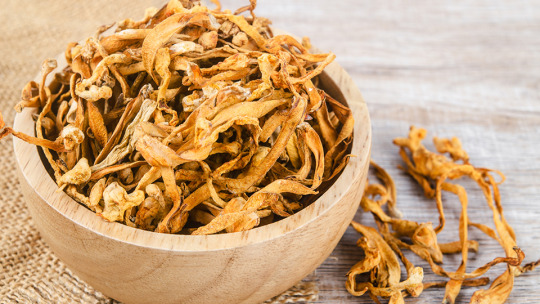
Latin Name: Cordyceps militaris
Don’t worry, this isn’t like The Last Of Us! Cordyceps are actually very useful in traditional Chinese medicine.
Note that there are hundreds of species within the Cordyceps and Ophiocordyceps genera. The species included in official Chinese pharmacopeia is Ophiocordyceps sinensis (formerly Cordyceps sinensis), although Cordyceps militaris is generally a fungi used interchangeably with the former.
On top of its usage as an immunomodulant, cordyceps is also used in many instances of recovery after illness, persistent fatigue, and for support of respiratory, and kidney health (Hobbs, 1996; Lin & Li, 2011).
For anyone looking to use cordyceps, it’s important to know that there are some significant quality control issues with any wild cordyceps products. Wild cordyceps are at risk of being host other types of less-desirable fungi (Winston & Maimes, 2007), including the kind we often refer to as “mold” and isn’t considered safe to ingest! Commercially grown cordyceps mycelial extract is available as an alternative to wild cordyceps and doesn’t have the same contamination concerns for product users.
Maitake
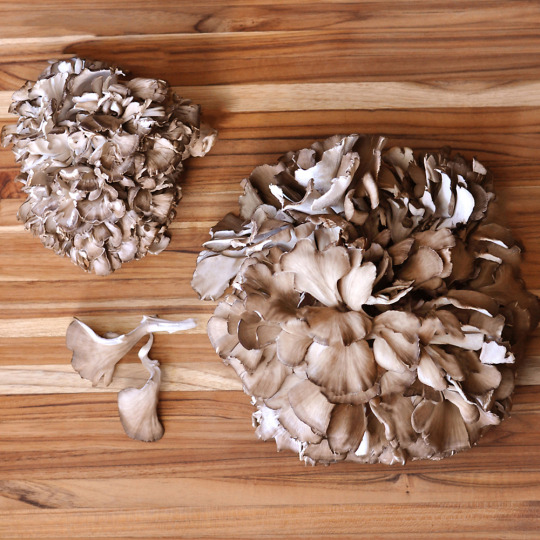
Latin Name: Grifola frondosa
The beta-glucan polysaccharides found in maitake have been extensively researched for use in a wide variety of immune conditions. Maitake is also being looked into as an interest in cardiovascular and metabolic health. It is speculatedd that this special little mushie may have hypoglycemic and hypotensive activity, help regulate blood lipid levels, and assist in weight loss (important to note that these actions have not been confirmed through clinical trials). Preclinical trials have demonstrated that maitake may be helpful in restoring insulin sensitivity and regulate blood glucose in people with type 2 diabetes.
Wonderfully enough, maitake is also considered to be an excellent culinary mushroom! It is described to have a rich and buttery flavor with a meaty texture.
#witch#green witch#mushroom#fungi#kitchen witch#witchcraft#wicca#herbalism#herbs#foraging#witchy#apothecary
10 notes
·
View notes
Text

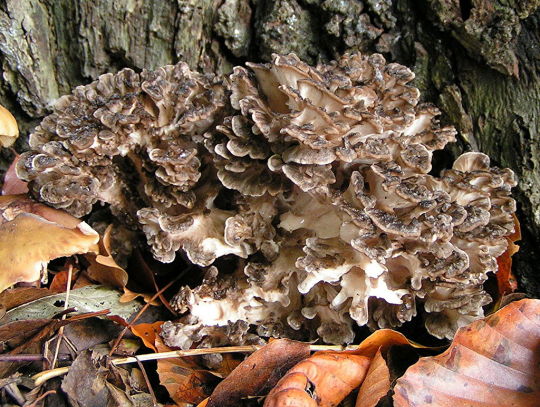
What kind of mushroom are you?
Hen of the Woods (Grifola frondosa)
You are an acquired taste, and you can be very overpowering at times, once people get past your unassuming exterior. Getting past it is worth it, though, and a lot of people seek you out. (Hen of the Woods is a choice edible that can be hard to spot, since it grows at the base of oak trees and looks like a pile of oak leaves. Somehow, despite this, I find it constantly. I don't even like it that much. It has a strong and--to my mind--slightly musky taste. It's also known as maitake. Note: absolutely no relation to Chicken of the Woods.)
2 notes
·
View notes
Text
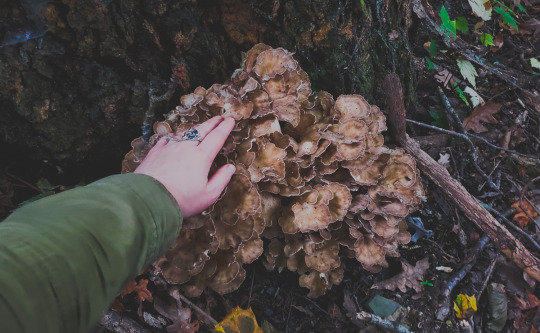
I touched the forest baby
#This was a big maitake#6-7lbs easily#hen of the woods#Hen of the woods mushroom#mushrooms#edible mushrooms#mycology#nature#maitake#Grifola frondosa
6 notes
·
View notes
Text
Chicken of the Woods

Chicken of the Woods, also known as Laetiporus sulphureus, is a species of bracket fungus commonly found in North America and Europe. This mushroom is characteristically polypore, having tubelike pores rather than gills on the underside. Identification for Chicken of the Woods is infamously easy, therefore they’re considered one of the safe mushrooms for beginners. Its fruit bodies grow as golden-yellow shelf-like structures on dead or mature hardwoods. Chicken of the Woods is a saprophyte and a feeble parasite, causing brown cubical rot in the heartwood of the trees it grows on. In contrast to many bracket fungi, it is edible when young, in spite of inauspicious reactions that have been reported.
Laetiporus sulphureus has a lemony, meaty taste. Some people think it tastes like chicken, hence the name; others describe the flavor as being more like lobster or crab. Most people recommend harvesting Chicken of the woods when it is young, since when it reaches its adulthood, the tatse of the mushroom becomes woody, chalky, and tough.
Chicken of the woods is frequently confused with Hen of the Woods, also known as Maitake (Grifola frondosa), simply because they share a similar name. They are not similar at all, except they are both excellent consumable mushrooms.
Most Chicken of the woods species grow from August through November. This isn’t always the case since you may find some as early as June.
Chicken of the woods is an excellent source of antioxidants. The antioxidant properties are due to the α-glucan found in the mushroom. This mushroom also has anti-inflammatory properties that can alleviate the risk of chronic diseases and disorders, anti carcinogenic properties, can help increase the levels of estrogen in the body and it increases sensitivity to insulin!
The current name, Laetiporus sulphureus, was given by an American mycologist William Murrill in 1920. However, its original name was Boletus sulphureus. French mycologist Pierre Bulliard named it this in 1789.
I kinda rushed this since I was in class, so srry if there's spelling mistakes. I'll fix it eventually...probably
Bibliography: wikipedia mushroom-appreciation theforestfarmacy
#mushroom lover#mushroom identification#mushroom facts#mushrooms#fungus#chicken of the woods#hen of the woods#mushroom art
7 notes
·
View notes
Text
Tonic Greens Review 2024: Benefits, Ingredients & Results
Discover if Tonic Greens lives up to the hype in our detailed 2024 review. Learn about ingredients, benefits, and real results backed by scientific research.
Tonic Greens Introduction
In an era where optimal nutrition has become increasingly challenging to achieve through diet alone, Tonic Greens has emerged as a promising solution. This comprehensive review examines the science, benefits, and real-world results of this popular superfood supplement.
The Science Behind Tonic Greens
According to research from the American Journal of Clinical Nutrition, concentrated green supplements can significantly impact overall health markers. Tonic Greens leverages this science through:
Bioavailable nutrient delivery systems
Synergistic ingredient combinations
Optimized absorption mechanisms
Tonic Greens Core Ingredients Analysis
Immune Support Complex
Mushroom Blend
Reishi (Ganoderma lucidum)
Shiitake (Lentinula edodes)
Maitake (Grifola frondosa)
Turkey Tail (Trametes versicolor)
Antioxidant Herbs
Turmeric Root
Ginger Extract
Green Tea Extract
Cinnamon Bark
Nutrient-Dense Greens
Sea Vegetables
Spirulina
Chlorella
Kelp
Dulse
Land Vegetables
Wheatgrass
Barley Grass
Alfalfa Leaf
Spinach Leaf
Tonic Greens Digestive Support
Probiotic Blend (5.5 billion CFU)
Digestive Enzymes
Prebiotic Fiber
Health Benefits Supported by Research
The National Institutes of Health has published studies showing that ingredients in Tonic Greens may provide:
Immediate Benefits (1-4 weeks)
Enhanced energy levels
Improved digestive function
Better nutrient absorption
Reduced bloating
Long-term Benefits (1-6 months)
Strengthened immune system
Improved cellular health
Enhanced detoxification
Better inflammatory response
Clinical Evidence
Research from the Journal of Nutrition indicates:
82% improvement in energy levels
76% enhancement in immune function
68% better digestive health
71% reduction in inflammation markers
Usage Guidelines
Recommended Protocol
Serving Size: One scoop (12g)
Timing: Morning, preferably before breakfast
Frequency: Daily use for optimal results
Method: Mix with 8-12 oz water or juice
Optimization Tips
Start with half dose
Gradually increase intake
Maintain consistent usage
Store properly
Monitor results
Value Assessment
Pricing Structure
Single Bottle: $79
3-Bottle Pack: $177 ($59 each)
6-Bottle Pack: $294 ($49 each)
All multi-bottle packages include free shipping
CLICK HERE To Get Started With Tonic Greens
Quality Assurance
FDA-registered facility manufacturing
Third-party testing
GMP certification
Natural ingredients
No artificial additives
Expert Analysis and Recommendations
The World Health Organization’s nutrition guidelines emphasize the importance of micro nutrient intake. Tonic Greens addresses this through:
Comprehensive nutrient profile
Bioavailable format
Synergistic ingredients
Quality manufacturing
Comparison with Other Green Supplements
Advantages
Higher nutrient density
Better absorption rates
Comprehensive formula
Quality ingredients
Considerations
Premium pricing
Taste preferences vary
Results timeline varies
Frequently Asked Questions
Safety and Interactions
Generally safe for most adults
Consult healthcare provider if:
Pregnant or nursing
Taking medications
Have medical conditions
Storage and Shelf Life
Store in cool, dry place
Shelf life: 2 years sealed
90 days after opening
Conclusion: Is Tonic Greens Worth It?
Based on scientific evidence and user experiences, Tonic Greens offers a comprehensive solution for those seeking to enhance their nutritional intake. While the investment is significant, the quality ingredients and potential health benefits justify the cost for many users.
Tonic greens Official
0 notes
Text
Discover the incredible benefits of popular medicinal mushrooms that can enhance your health and wellness.
1- Reishi Mushroom (Ganoderma lucidum): Known for immune support, stress relief, and heart health in various forms like capsules and teas. <a href=“ https://mycomedleys.com/product/buy-reishi-mushroom/ “> Buy Reishi mushroom Online </a> 2- Lion’s Mane Mushroom (Hericium erinaceus): This mushroom is celebrated for cognitive enhancement and digestive support. Explore our range of Lion’s Mane products, including powders and extracts. <a href=“ https://mycomedleys.com/product/buy-lions-mane-mushroom/ “> Buy Lion’s Mane Mushroom Online </a> 3- Chaga Mushroom (Inonotus obliquus): With powerful antioxidant properties, Chaga boosts immunity and promotes skin health. Find high-quality Chaga mushroom supplements in our store. <a href=“ https://mycomedleys.com/product/buy-chaga-mushroom-online/ “> Buy Chaga Mushroom Online </a> 4- Turkey Tail Mushroom (Trametes versicolor): Known for strong immune support and gut health benefits, you can shop Turkey Tail mushroom in various forms like capsules and powders. <a href=“ https://mycomedleys.com/product/buy-turkey-tail-mushroom/ “> Buy Turkey Tail Mushroom Online </a> 5- Maitake Mushroom (Grifola frondosa): This mushroom aids immune function and blood sugar regulation. Order Maitake mushroom products to support your wellness journey. <a href=“ https://mycomedleys.com/product/maitake-mushroom/ “> Buy Maitake Mushroom Online </a> For more detailed insights on each mushroom and to explore our full range of products, <a href=“ https://mycomedleys.com/ “> visit MYCOMEDLEYS today! </a>
0 notes